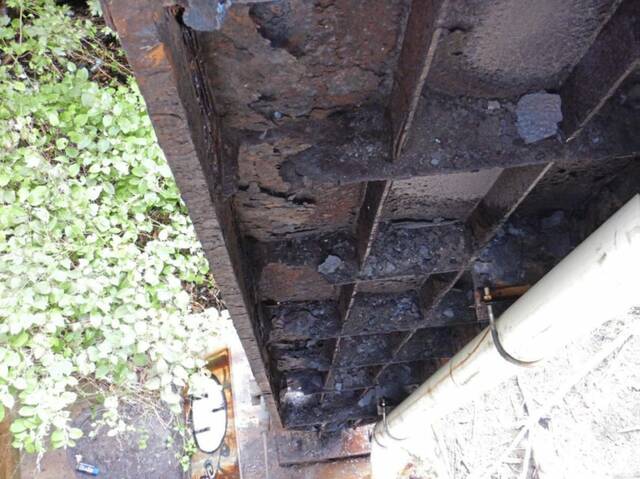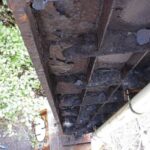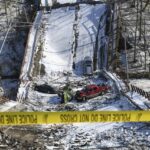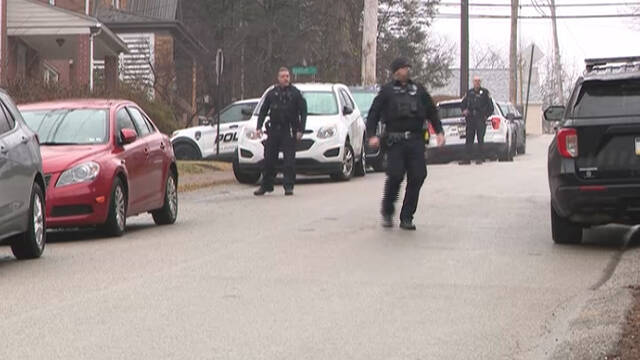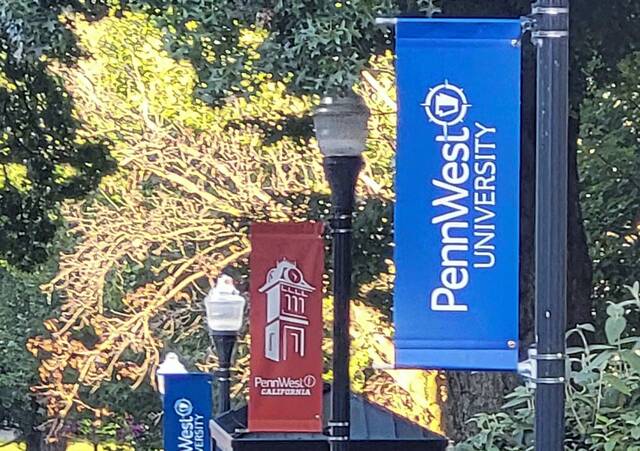Pittsburgh is already making improvements to the way it handles bridge upkeep, the city’s chief engineer said a day after the National Transportation Safety Board pinpointed the city’s lack of maintenance as a key reason the Fern Hollow Bridge collapsed.
The NTSB on Wednesday condemned the city for years of inaction and deferred maintenance that led to severe corrosion and decay on the Fern Hollow Bridge, which fell into a ravine in Pittsburgh’s Frick Park on Jan. 28, 2022. The board said shoddy inspections, poor record keeping and drains that were left clogged for years on end contributed to the catastrophic collapse.
Eric Setzler, the city’s chief engineer, said the city agrees with the board’s findings and already is working to address the issues it highlighted.
“I think we acknowledge that we did not do some of the routine maintenance that would’ve helped keep the bridge in better shape,” Setzler said Thursday in an exclusive interview with TribLive. “That’s just a fact. We can’t really deny that.”
But work is underway to ensure those problems aren’t repeated.
One of the main issues the safety board identified was a lack of maintenance on the bridge’s drains. According to its investigation, the bridge’s perpetually clogged drains were cleaned only once from 2005 till the span fell.
That proved to be a critical problem.
The bridge was made from an alloy called uncoated weathering steel that was supposed to form a protective coating to resist corrosion.
But the clogged drains caused water and road salt to accumulate on the bridge legs, the safety board said, preventing the area from drying and making it impossible for the protective barrier to form.
Without the coating, key parts of the leg corroded and decayed.
Setzler said he couldn’t say exactly why that was permitted to happen in the first place, but he pledged that it won’t happen again.
All 147 city-owned bridges have had their drains cleaned at least once since the Fern Hollow Bridge collapse underscored the need for such maintenance, Setzler said.
The city currently is working on a second round of cleaning and plans to clear out the drains of every bridge annually.
“We are getting ourselves on a cycle of getting that work done,” he said.
The city has cleaned the drains and re-inspected the 11 other bridges made of uncoated weathering steel. The safety board said the material itself was not problematic and did not lead to the collapse.
Six of the city’s bridges made with uncoated weathering steel are pedestrian bridges, and five carry vehicles.
The city was not able to provide a list of those bridges Thursday.
Mayor Ed Gainey’s administration took office just weeks before the bridge collapse. Maria Montaño, a spokeswoman for Gainey, said she couldn’t say why bridge maintenance had fallen so far behind in prior administrations. But she said that there wasn’t enough money previously budgeted for bridge maintenance work to keep up with the upkeep required.
“The personnel and resources just weren’t available,” she said. “I can’t speak to why those decisions were made, but it’s something we’ve addressed through our budget allocations.”
City Council President R. Daniel Lavelle, D-Hill District, said there’s “always more need than there are resources,” but officials are now “placing a priority on our infrastructure” and allocating more funding to infrastructure needs than they had in recent years.
He also pointed out that the city has created a new commission to address infrastructure needs.
“Clearly there was a lapse from the city in heeding the recommendations of those who were doing the inspections” of the Fern Hollow Bridge, he said. “I don’t expect that to be a problem moving forward.”
Montaño touted a 300% increase in funding for bridge maintenance in the city’s 2024 budget from a year earlier.
The city bolstered staffing in the Department of Mobility and Infrastructure, which has allowed the department to prioritize “making sure we’re doing a detailed review of every inspection report that comes in,” Setzler said.
One of the safety board’s criticisms was that inspection reports were flawed and did not properly evaluate the problems the Fern Hollow Bridge was experiencing before it collapsed.
Setzler said the city is already “providing a much higher level of oversight” on those inspections.
The city also has requested updated load ratings on bridges — how much weight they can hold — when there are questions about whether the existing rating is accurate.
Since the Fern Hollow Bridge collapse, city officials have closed one bridge over safety concerns: the Charles Anderson Memorial Bridge in Schenley Park. It remains closed.
The Pennsylvania Department of Transportation has existing contracts with the engineering firms that most recently inspected the Fern Hollow Bridge, but they terminate this year, Montaño said. She did not identify the firms.
City officials have told PennDOT that going forward, they want a voice in deciding which companies are selected for new contracts.
“PennDOT looks forward to continued partnership with the city of Pittsburgh and the NTSB as we work to respond to the recommendations in the report, many of which we have already proactively implemented,” PennDOT spokesman Steve Cowan said Thursday in the agency’s first statement since the safety board announced its findings.
He added that the department “takes its oversight responsibilities seriously.”
Setzler said the city also will have a five-person in-house bridge maintenance team operational by the fall that will be able to conduct minor fixes. His hope is that one day it can be expanded to address more significant repairs.
The city is working to improve its record-keeping regarding paving on bridges after the safety board said inaccurate information about the amount of asphalt on the Fern Hollow Bridge led inspectors to overestimate how much weight it could hold.
In 2014, the Fern Hollow Bridge was posted to allow vehicles up to 26 tons. But Jennifer Homendy, the safety board chairwoman, said Wednesday that the maximum allowed weight at the time it collapsed should have been 3 tons. What’s more, she said, it was in such bad condition after years of poor ratings that it should have been shut down.
One of the problems documented by investigators was that 3 inches of asphalt had been applied to the bridge over the years, increasing the weight on the legs, but the maximum load was never recalculated or lowered as a result.
The city is now implementing a new system that will include collaboration between the paving division and the bridge engineering group to ensure such errors aren’t repeated.
The safety board acknowledged that Pittsburgh already has improved its bridge maintenance program and recommended the city work with PennDOT to evaluate the changes it has made.
“This is something we’ve taken very seriously,” Montaño said. “When the mayor speaks about things like making Pittsburgh the safest city in America, he’s also talking about the condition of the city-owned bridges and infrastructure.”
The city already has contracted with an independent firm to inspect all of the city’s bridges and put together a plan for addressing key maintenance needs and finding additional funding. All of the top-priority problems have already been addressed, Montaño said, and more than a dozen bridge repair and rehabilitation projects are currently underway throughout the city.
“I feel like we have a good handle of where we’re at with bridges,” Setzler said, explaining that the city is continually adding updated information from new inspections to its comprehensive bridge analysis database.
The city is now working to keep up on cleaning, maintenance and repairs while also prioritizing preventative work that could help prolong the lifespan of the city’s bridges.
“We are being aggressive in everything related to bridges — the bigger projects, obtaining funding,” Setzler said. “We’re being aggressive in oversight of our inspection consultants, and we’re being aggressive in maintenance and repair.”
Though Montaño and Setzler highlighted progress in the city’s bridge maintenance efforts, they also acknowledged there’s more work to be done.
“This is not going to go away any time soon,” Montaño said. “We have a lot ahead of us. We’re really committed to the long-term work.”
Related:
• 'Cascade of failures': NTSB blames Fern Hollow Bridge collapse on city, state, feds• Lawyers for Fern Hollow victims tee off on Pittsburgh officials, bridge inspectors
• Dozens of bridges maintained by Pittsburgh in need of repairs within 6 months, report says


